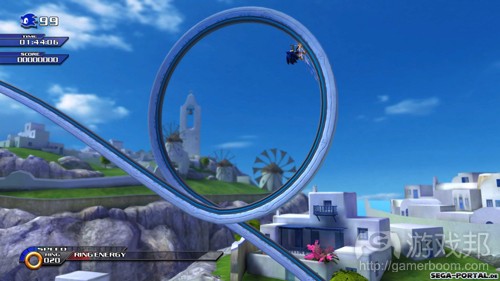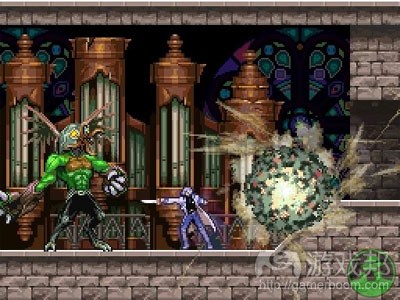举例概述失败游戏设计的数宗“罪名”(三)
作者:NGamer Staff
到目前为止,我们已经传讯了rubberbanding AI、无法跳过的过场动画、信任跳跃、狂吹麦克风、情节发展过于模糊和恼人的护送任务,我们的审判还没有结束。再次开庭!(请点击此处阅读第一、第二部分内容)
冗长的教程
被告:《索尼克释放》
指控:将玩家看成是从未接触过游戏手柄的老古董。
原告:可以看到新的索尼克游戏确实很棒,但是在畅玩游戏时忽然暂停,然后出现“按A键跳跃”的提示语句(游戏邦注:玩家随后按A键继续)。接下来,游戏中出现了更多的教程提示。
为什么不一次性说清楚呢?每次都通过停止游戏进程来展示教程,而每个教程解释的都是很基础的,为人所广泛接受的游戏概念。
被告:你玩过大量的游戏,但是开发者也需要顾及那些经验不足的玩家,尤其是在受到老年人喜欢的Wii游戏中。
裁定:有罪
审判:如果是这样考虑的话,那么就要将教程展示设计成可选项,或至少不那么具有冒犯性。我们欢迎那些无缝融入动作中的教程,但是它们不可影响到游戏的流程。你要接受的处罚是:进行神经系统移植,让你在夜间随机说出“按A键打呼噜”这句话。
再犯可能性:10/10。这种做法屡禁不止,即便现在已经出现了纸质的教程。
不断让玩家搜索
被告:《逆转裁判:复苏的逆转》
指控:在杂乱无章的地区中隐藏对叙事至关重要的道具,然后强迫玩家去寻找。
原告:所有玩过指向点击类的冒险游戏的人都很熟悉这种游戏玩法特征——物品隐藏得毫无意义,而且关键在于,你必须要去寻找这个隐藏物品。
尽管事态与旧时的《King’s Quest》(游戏邦注:在这款游戏中,有些道具的高和宽只有1个像素)相比有所缓和,但是在《逆转裁判》中,你也需要走过3到4个场景才会发现装着道具的包裹。
被告:我反对这项指控!你在游戏中扮演的是侦探,不是吗?侦查便是你的职责。游戏经常被指控所有东西随手可得没有深度,但是我们让你去做些事情,你就觉得很麻烦。
裁定:有罪
审判:这里的问题不是我们必须去寻找某些东西,而是我们从一开始就不知道要去寻找什么东西。这是游戏脚本质量不高的象征,令人称奇的是,像《逆转裁判》这样的大作也会犯这种错误。我们会释放你,但是也会警告你。如果再犯这种错误,我们将把你的手铐的钥匙藏在朴茨茅斯城的一个隐秘地点。
再犯可能性:7/10。只要指向点击冒险游戏存在,这种问题就会继续出现,但目前许多PC游戏中开始包含强调当前场景中所有互动性物体的提示。这种做法就好很多了。
难度混乱
被告:所有的DS版本《恶魔城》游戏
指控:结束简单的关卡或事件链之后,面对的是极其复杂且有难度的BOSS战斗。
原告:尊敬的法官,原告想要向法院提出的是,如果去除所有的BOSS战的话,《恶魔城》系列游戏会更加受人喜欢。我们并非歧视或反对游戏中包含BOSS战斗,但是它们不应当比之前的关卡历程难这么多。我们没有因期盼下个拐角会出现的东西而感到兴奋,我们在游戏中经常会为即将看到破坏进程的BOSS而感到担心。
被告:这难道不算是主观意见吗?对于其他人来说,BOSS战是游戏的亮点,Boss Rush模式的流行便可见一斑。它们扮演着守门人的角色,标志着游戏中某个章节的结束,在继续进行下去之前先测试你学到的技能。如果游戏移除所有BOSS的话,你们难道不会说我们单调乏味吗?
裁定:有罪
审判:尽管被告方的辩解有一定道理,但是我们还是支持原告的说法。正是由于《恶魔城》中的BOSS战难度设置不当,导致整款游戏蒙上了阴影。对你下达的判决是:吃4年美味的糖果,然后接受1年痛苦的牙科手术。
再犯可能性:6/10。尽管世界各地都有游戏犯下这等罪行,但日本游戏中尤为普遍(游戏邦注:Konami和Capcom是这种做法的“惯犯”)。
游戏邦注:本文发稿于2011年6月18日,所涉时间、事件和数据均以此为准。(本文为游戏邦/gamerboom.com编译,如需转载请联系:游戏邦)
Gaming’s most frequent design crimes Pt. 3
So far we’ve called out rubberband AI, unskippable cutscenes, leaps of faith, blowing into the mic, vague plot progression and escort missions – and we’re far from done. Court is in session again!
LONG-WINDED TUTORIALS
Defendant: Sonic Unleashed
The charge: Treating the player like they’re some kind of cack-handed idiot from the year 1833 who has never so much as seen a joypad before.
Case for the prosecution: Alright! New Sonic game! This is going to be so frickin’ fast. If this doesn’t melt our faces off, then with God as our witness, our faces will just have to remain a melt-free zone. Here… we… GO! *Action immediately grinds to a halt* “You can press the A button to jump (press the A button to continue).” *Action resumes* *Sonic jumps over a couple of tiny cliffs. The level ends* Hnnnnng.
Well, at least it’s a one-off, and it won’t be followed by an endless succession of similarly patronising tutorials, each one onerously explaining a basic, widely used gaming concept to the minutest detail? Right? Sega? You’ve gone awfully quiet over there.
Case for the defence: Yeah, but you’re a load of battle-hardened old hacks who’ve played through thousands of games in your lifetimes. I mean, look at you! Even your clothes have been forged out of old DS cartridges. Developers have to cater for the inexperienced too, you know – especially on the grandma-friendly Wii.
Verdict: GUILTY
Judgement: Then make them optional, or at the very least unobtrusive. We welcome tutorials that seamlessly blend into the action, but when they disrupt the flow of the game? Well, then you’ve crossed the line of decency. Your punishment: to be fitted with a neural implant that blurts ‘Press A to snore!’ at random intervals during the night.
Chances of re-offending: 10/10. They can’t be stopped. They’re maniacs. Even more so now paper-based manuals are on the way out…
KEEP SEARCHING…
Defendant: Phoenix Wright: Ace Attorney (& Sons)
The charge: Hiding narrative-crucial items in a cluttered area and then forcing the player to get down on their hands and knees and DIG FOR IT.
Case for the prosecution: Anyone who’s played a point ‘n’ click adventure before will be instantly familiar with this howler of a gameplay ‘feature’ – the fruitless search for a hidden object that, critically, you don’t even realise you need until you’ve found it.
While things have got a little less oblique since the bad old days of King’s Quest (where you’d be expected to notice an item that was only a single pixel high and wide), Phoenix Wright is not above making you traipse around three or four screens until you finally discover the sweet wrapper (or whatever) that was preventing Phoenix from just getting on with his life.
Case for the defence: OBJECTION! Ahem. You’re supposed to be a detective, aren’t you? Go do some detecting, you bum. Games get accused of hand-holding all the time, but as soon as we ask you to do something, it’s all ‘wah, wah, wah, I don’t want to root around in a bin’.
Verdict: GUILTY
Judgement: The problem here isn’t that we have to go looking for something – it’s that we have no idea what we’re searching for in the first place. It’s a sign of sloppy scripting and it’s disappointing that even mighty point’n'click heavyweights such as Phoenix Wright fall into this trap. We’re going to let you off with a warning though, ’cause you’re so damned funny. One thing though: we’ve hidden the key to your handcuffs somewhere in Portsmouth.
Chances of re-offending: 7/10. As long as there are point ‘n’ click adventures, this flaw will continue to resurface – but many contemporary PC games now include a key that highlights all the interactive objects on the current screen. Much better (well, a bit better).
DIFFICULTY SPIKES
Defendant: All the DS Castlevanias
The charge: Rounding off an easy-peasy level or chain of events with a cement mixer-hard boss fight.
Case for the prosecution: Your honour, the prosecution would like to put forward to the court that the Castlevania games would have been far more enjoyable if they’d abandoned the boss fights altogether. We’ve got nothing against boss fights per se, but there is no reason for them to be this much more difficult than the platforming sections that precede them. Instead of being excited to see what was around the next corner, we spent our time in a constant state of dread, waiting for the next progress-ruining impossi-boss to rear its head.
Case for the defence: This is subjective though, isn’t it? For other people, the bosses are the highlight of the game, as evidenced by the popularity of the Boss Rush mode. They serve as narrative bookends and gatekeepers, closing one chapter of the game and testing you on what you’ve learned before allowing you to progress. And if there weren’t any bosses, you’d have a pop at us for being one-dimensional and samey, wouldn’t you? Hmpf. We can’t win with you games critics.
Verdict: GUILTY
Judgement: The only sulking you’ll be doing… is in JAIL! Ha! We should totally have become crime drama writers. But anyway: although the defence makes a solid case, we’re going to have to side with the prosecutors here. When the boss fight difficulty levels are as poorly judged as they are in Castlevania, they throw a cloud over the entire game. You’re sentenced to four years of eating delicious sugary treats – and one year of painful dental surgery.
Chances of re-offending: 6/10. This is a common ailment among Japanese games (Konami and Capcom are the biggest repeat offenders), although crimes have been reported worldwide (A Boy And His Blob Wii, we’re looking at you).
Check back tomorrow when we’ll reconvene for our final session of punishing gaming’s biggest offenders. (Source: Computer And Video Games)
下一篇:独立开发者适用的3种市场营销策略










































 闽公网安备35020302001549号
闽公网安备35020302001549号